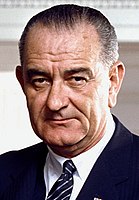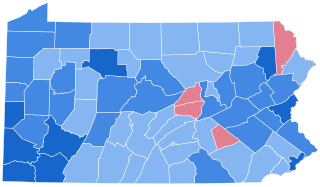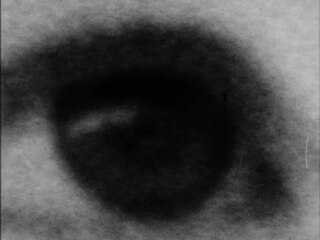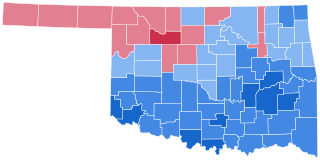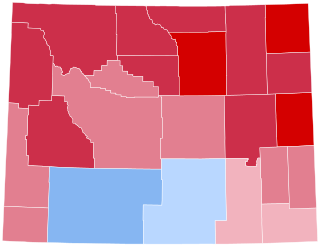| ||||||||||||||||||||||||||
| ||||||||||||||||||||||||||
 County Results
| ||||||||||||||||||||||||||
| ||||||||||||||||||||||||||
| Elections in Wyoming |
|---|
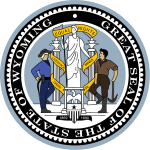 |
The 1964 United States presidential election in Wyoming took place on November 3, 1964, as part of the 1964 United States presidential election. State voters chose three [2] representatives, or electors, to the Electoral College, who voted for president and vice president.
Contents
Wyoming was won by incumbent Democratic President Lyndon B. Johnson, with 56.56% of the popular vote, against the Republican nominee, Arizona Senator Barry Goldwater, with 43.44% of the popular vote, representing a margin of victory of 13.2%. [3] [4] Johnson's victory was part of a nationwide landslide in which he captured many traditionally Republican states, and Wyoming was no exception. Johnson flipped 11 counties that had voted for Richard Nixon in 1960, those being: Albany, Platte, Goshen, Natrona, Fremont, Hot Springs, Uinta, Lincoln, Park, Big Horn, & Sheridan. Goldwater's performance in the state was the worst for a Republican since Alf Landon in 1936.
Johnson enjoyed bipartisan support due to sympathy over the Assassination of his predecessor John F. Kennedy in 1963, along with support for many of his programs such as The Great Society, which aimed to eliminate poverty in America, and the Civil Rights Act of 1964, which outlawed racial discrimination. Goldwater, a believer in free markets and low taxes, famously opposed both of these programs, and suggested making social security voluntary, which cost him a great deal of support among moderates - including Republicans - who viewed him as too conservative. Nelson Rockefeller and George W. Romney, the governors of New York and Michigan respectively, refused to endorse Goldwater. He did receive some support from Nixon and former President Dwight D. Eisenhower, however the former wanted to see much of Goldwater's agenda struck down, while Eisenhower's support was limited to a single commercial, as he never fully forgave the Arizona Senator for calling many of his biggest accomplishments as President such as the Interstate Highway System "a dime store New Deal. [5] Democrats successfully portrayed him as an extremist, most famously with the Daisy Television Ad. With Johnson's victory, Democrat Gale W. McGee held his Senate seat and Democrats flipped the state's sole congressional seat. They even managed to regain control of the Wyoming House of Representatives and got within a single seat of capturing the State Senate, an astounding achievement in a state that political pundits had written off in the years prior as "too red" [6]
Despite his stunning defeat, Goldwater's campaign began a long term political realignment in American politics, with conservatives beginning to sway towards the Republican Party, ultimately culminating in the 1980 presidential victory of Ronald Reagan, who had supported Goldwater in 1964, famously giving a speech on his behalf titled "A Time For Choosing", which raised over $1 million for the Republican nominee's campaign, [7] and launching Reagan into the national political spotlight. Additionally, many Northeastern liberals who had previously favored the Republicans began to move towards the Democrats, which would ultimately flip the Northeast blue in 1992.
As of the 2020 presidential election [update] , this was the last time a Democratic presidential nominee has carried the state of Wyoming – in fact no Democrat has since reached forty percent of the state's vote. It is also the last occasion that Laramie County (home of Cheyenne, the state's largest city), Fremont County, Sheridan County, Park County, Uinta County, Lincoln County, Goshen County, Big Horn County, Platte County, or Hot Springs County have voted for a Democratic Presidential nominee. [8] This is also the last time that Teton County voted for the Republican candidate while the state as a whole voted for the Democrat.
